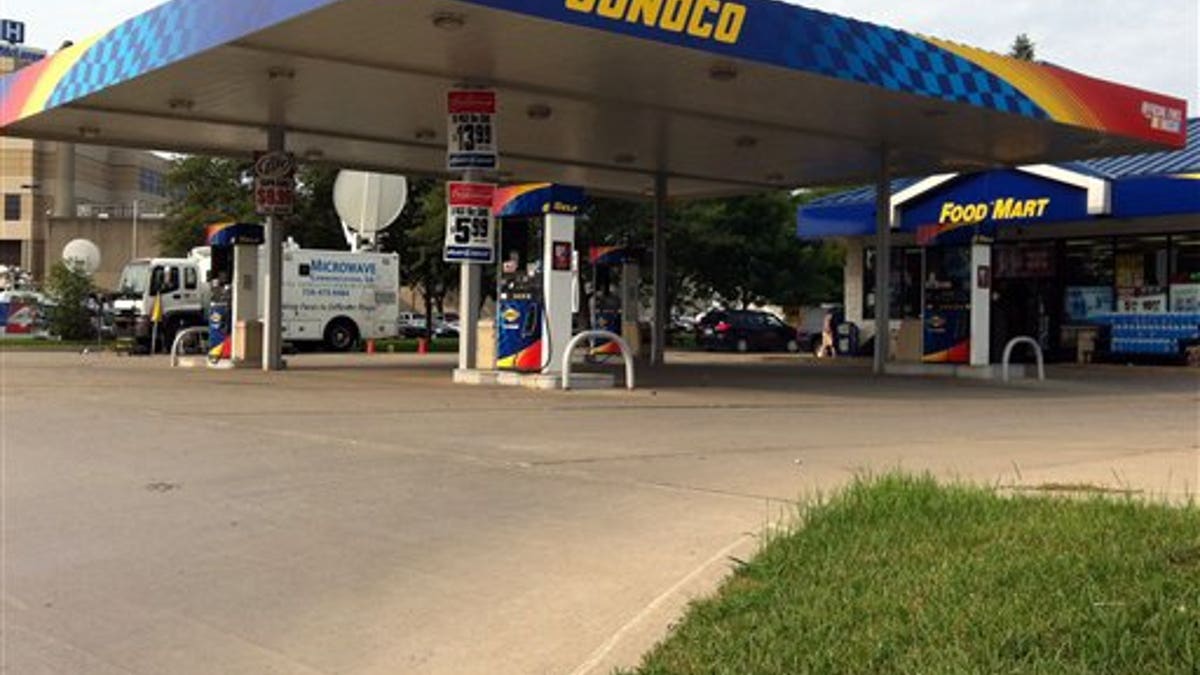
FILE- In this Thursday, Aug. 16, 2012, file photo, gas prices are advertised at a Sunoco gas station and market in Lapeer, Mich. U.S. drivers are paying an average of $3.72 per gallon on Monday, Aug. 20, 2012. That's the highest price ever on this date, according to auto club AAA, a shade above the $3.717 average on Aug. 20, 2008. A year ago, the average was $3.578. (AP Photo/Mike Householder) (AP)
The average gas mileage of new cars and trucks will have to nearly double by 2025 under regulations that were finalized Tuesday by the Obama administration.
The new rules would require the fleet of new cars and trucks to average 54.5 miles per gallon in 13 years, up from 28.6 mpg at the end of last year.
The regulations will change the cars and trucks in U.S. showrooms and drive automakers to introduce new technology to make vehicles cleaner and more efficient.
The administration says the regulations will save families more than $1.7 trillion in fuel costs and bring an average savings of $8,000 over the lifetime of a new vehicle sold in 2025. The standards also will halve the greenhouse gas pollution coming from cars and light truck tailpipes by 2025, the White House said in a statement.
President Obama said in a statement that the new fuel standards "represent the single most important step" his administration has taken to reduce U.S. dependence on foreign oil. "This historic agreement builds on the progress we've already made to save families money at the pump and cut our oil consumption," he said.
Republican presidential candidate Mitt Romney has opposed the standards, and his campaign on Tuesday called them extreme and said they would drive up the price of new cars. Any savings at the pump would be wiped out by rising costs of cars, the campaign said.
By 2025, some bigger models may disappear, and dealers could offer more efficient gas-electric hybrids, natural gas vehicles and electric cars. There also will be smaller motors, lighter bodies and more devices to save fuel, such as circuits that temporarily shut off engines at traffic lights. The changes will raise new car prices, but the government says that will be more than offset by savings at the pump.
The gas mileage requirements will be phased in gradually and get tougher starting in 2017. They build on a 2009 deal between the Obama administration and automakers that committed cars and trucks to average 35.5 mpg by model year 2016.
In the arcane world of government regulations, the rules don't mean that cars and trucks will average 54.5 mpg in 13 years. It's actually closer to 40 mpg in real-world driving.
Under the complex regulations, dubbed "Corporate Average Fuel Economy, or CAFE," automakers can have lower mileage by using credits for selling natural gas and electric vehicles, changing air conditioning fluid to one that pollutes less, and even for placing louvers on car grilles to improve aerodynamics. They won't have to improve pickup truck mileage much for the first few years, but big improvements will come later, after 2020.
Still, automakers have been adding technology to boost gas mileage, mainly because people want to spend less on gasoline, which averaged about $3.75 per gallon this week. The research firm J.D. Power and Associates says that fuel economy is the top factor people consider when buying a car in the U.S.
CAFE requirements were first imposed in the 1970s in response to foreign oil embargoes, and the administration says this is the first update in decades.




